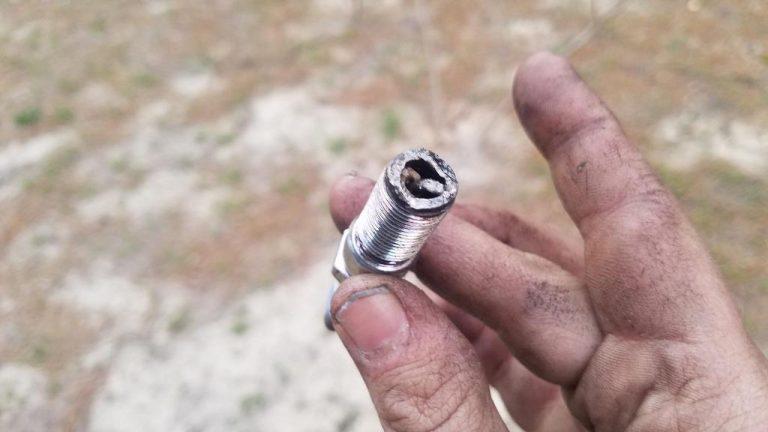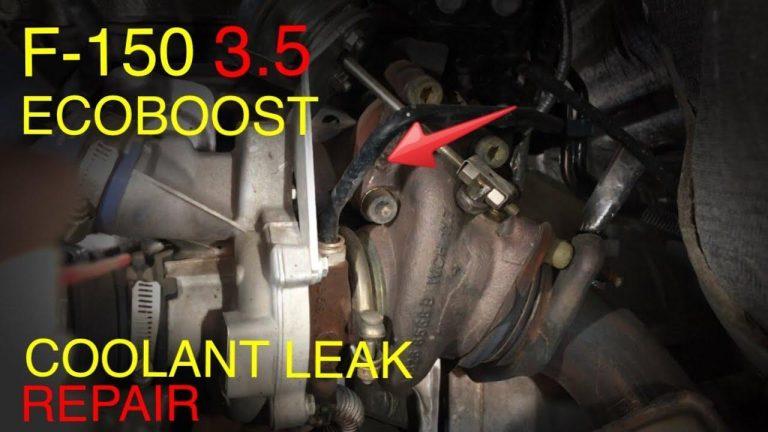Best Year for 6.7 Powerstroke: Uncover the Ultimate Model
The best year for the 6.7 Powerstroke is 2020. This model year offers excellent reliability and performance.
The 2020 6. 7 Powerstroke stands out for its impressive features and enhancements. It boasts a stronger engine, delivering 475 horsepower and 1,050 lb-ft of torque. This power boost makes it ideal for towing and heavy-duty tasks. The 2020 model also includes updated transmission systems and improved fuel efficiency.
Ford addressed several previous issues, ensuring a more reliable and durable performance. Owners appreciate its refined design and advanced technology, making it a top choice for truck enthusiasts. If you’re looking for a dependable and powerful diesel engine, the 2020 6. 7 Powerstroke is an excellent investment.
Early Models
The early models of the 6.7 Powerstroke have a special place in the hearts of truck enthusiasts. These first-generation engines introduced many features that set them apart. They also faced some common issues that owners needed to address. Let’s dive into the specifics of these early models.
First Generation Features
The first-generation 6.7 Powerstroke engines were introduced in 2011. They were designed to be more efficient and powerful. Key features included:
- Turbocharged Diesel Engine: This engine offered high torque and horsepower.
- DualBoost Turbo System: Improved performance and reduced turbo lag.
- Exhaust Gas Recirculation (EGR) System: Lowered emissions and improved fuel economy.
- Compact Graphite Iron (CGI) Block: Increased durability and strength.
These features made the first-generation models stand out. They provided a blend of power and reliability.
Common Issues
Despite their strengths, early models had some common issues. These problems were often reported by owners:
| Issue | Description |
|---|---|
| Turbocharger Failures | Many users reported turbocharger issues, which affected performance. |
| EGR Cooler Problems | The EGR cooler often clogged, leading to engine overheating. |
| Fuel System Issues | Faulty fuel injectors and pumps were common, causing engine stalling. |
These issues were significant but manageable. Regular maintenance helped mitigate some of these problems.
Mid-generation Improvements
Understanding the mid-generation improvements for the 6.7 Powerstroke is essential. These upgrades brought significant changes. They boosted performance, reliability, and efficiency. The 6.7 Powerstroke is a favorite among truck enthusiasts. Let’s dive into the notable upgrades and performance enhancements.
Notable Upgrades
The mid-generation 6.7 Powerstroke saw many notable upgrades. These changes made it a better engine. Here are some key improvements:
- Turbocharger Update: A more efficient turbocharger was introduced.
- Fuel System Enhancement: The fuel system was redesigned for better performance.
- Cooling System Upgrade: Improved cooling for better engine longevity.
- Emission Control Improvements: New technology for cleaner emissions.
Performance Enhancements
The performance of the 6.7 Powerstroke improved significantly. These enhancements made the engine more powerful and efficient. Key performance enhancements include:
| Feature | Details |
|---|---|
| Increased Horsepower | The mid-generation models have higher horsepower. |
| Torque Boost | Improved torque for better towing and hauling. |
| Fuel Efficiency | Better fuel economy with new engine tweaks. |
| Enhanced Transmission | Smoother shifting with the updated transmission system. |
These upgrades and enhancements made the 6.7 Powerstroke a standout. Truck owners appreciate the reliability and performance. The mid-generation improvements were crucial for its success.
Top Performance Years
The 6.7 Powerstroke engine has been popular among truck enthusiasts. It offers reliability, power, and efficiency. But some years stand out more than others. Let’s explore the top performance years for the 6.7 Powerstroke.
Best Models
Certain models of the 6.7 Powerstroke have achieved great performance. These models offer the best features and reliability. Here are some of the best models:
- 2011 Ford F-250
- 2015 Ford F-350
- 2017 Ford F-450
- 2019 Ford F-250
Key Features
The top performance years of the 6.7 Powerstroke come with impressive features. These features make the models stand out. Here are the key features:
| Model Year | Key Features |
|---|---|
| 2011 |
|
| 2015 |
|
| 2017 |
|
| 2019 |
|

Credit: www.slashgear.com
Reliability And Durability
When deciding on the best year for the 6.7 Powerstroke, two key factors to consider are reliability and durability. These aspects can greatly influence your satisfaction and the truck’s lifespan. Understanding how these trucks perform over time and hearing from actual owners can provide valuable insights.
Long-term Performance
The 6.7 Powerstroke is known for its long-term performance. Many models boast high mileage with minimal issues. This diesel engine offers robust power and efficiency. The 2015 model year is often highlighted for its reliability. Enhancements in this year contributed to fewer breakdowns and better fuel economy.
Here’s a quick comparison of key years:
| Year | Mileage (miles) | Common Issues |
|---|---|---|
| 2011 | 150,000+ | Turbo failures |
| 2015 | 200,000+ | Few minor issues |
| 2017 | 180,000+ | Sensor problems |
Owner Feedback
Listening to owner feedback can reveal a lot. Many owners of the 2015 model report high satisfaction. They often mention its durability and minimal maintenance. Here are some common praises:
- Strong engine performance
- Excellent fuel economy
- Long-lasting parts
Some owners of earlier models, like 2011, mention frequent repairs. This highlights the importance of choosing the right year. The 2017 model also receives positive reviews, though some mention sensor issues.
Fuel Efficiency
The 6.7 Powerstroke engine is known for its power and reliability. But what about its fuel efficiency? Understanding which year models offer the best fuel economy can save you money and help the environment. Below, we will explore the fuel efficiency of different year models through a comparative analysis and technological advances.
Comparative Analysis
Comparing fuel efficiency across different years provides valuable insights. Here is a table summarizing the fuel efficiency of various year models:
| Year | City MPG | Highway MPG | Combined MPG |
|---|---|---|---|
| 2011 | 15 | 20 | 17 |
| 2015 | 16 | 22 | 19 |
| 2020 | 17 | 23 | 20 |
| 2022 | 18 | 24 | 21 |
The 2022 model stands out with the highest combined MPG. Older models like 2011 have lower fuel efficiency.
Technological Advances
Technological improvements play a significant role in fuel efficiency. The 6.7 Powerstroke engine has seen several advancements over the years:
- Turbocharger Enhancements: Newer models have more efficient turbochargers.
- Fuel Injection Systems: Advanced fuel injectors provide better atomization.
- Lightweight Materials: Newer engines use lighter materials, reducing weight.
- Aerodynamics: Improved vehicle aerodynamics lead to less drag.
These technological advances contribute to better fuel efficiency. The newer models of the 6.7 Powerstroke engine benefit greatly from these enhancements. This is evident in their superior MPG ratings.

Credit: www.vehiclehistory.com
Maintenance And Cost
The 6.7 Powerstroke engine is known for its power and durability. But, like any vehicle, it requires regular maintenance. Understanding the common maintenance issues and the cost of ownership can help you make an informed decision. Below, we break down these aspects for you.
Common Maintenance Issues
The 6.7 Powerstroke is a reliable engine, but there are some common issues to be aware of:
- Fuel System Problems: The fuel injectors can fail over time.
- Turbocharger Failure: This is common if the engine is pushed too hard.
- Exhaust Gas Recirculation (EGR) System: The EGR valve can get clogged.
- Oil Leaks: These can occur at the oil pan or rear main seal.
Regular inspections and prompt repairs can mitigate these issues. Keeping up with routine maintenance is crucial.
Cost Of Ownership
Owning a 6.7 Powerstroke involves various costs. Here’s a breakdown:
| Maintenance Task | Estimated Cost |
|---|---|
| Oil Change | $100 – $150 |
| Fuel Filter Replacement | $50 – $100 |
| EGR Cleaning | $200 – $300 |
| Turbocharger Replacement | $1,500 – $2,500 |
The costs can vary based on location and service provider. Regular maintenance helps to avoid costly repairs.
In conclusion, maintaining a 6.7 Powerstroke isn’t cheap. But, it’s essential for long-term performance. Regular check-ups and timely repairs can save you money in the long run.

Credit: www.youtube.com
Frequently Asked Questions
What Is The Best Year Of The 6.7 Power Stroke?
The 2020 model year is considered the best for the 6. 7 Power Stroke. It offers improved performance and reliability.
What Year Of 6.7 Power Stroke To Avoid?
Avoid the 2011 Ford 6. 7 Power Stroke. It had numerous issues with fuel systems, turbochargers, and emissions components.
What Is The Most Reliable Powerstroke Engine?
The 7. 3L PowerStroke engine is considered the most reliable. It offers durability, longevity, and strong performance.
Is The 2017 6.7 Power Stroke A Good Engine?
Yes, the 2017 6. 7 Power Stroke is a good engine. It offers excellent performance, reliability, and fuel efficiency. Many users praise its durability and towing capacity. This engine is highly rated for heavy-duty use.
Conclusion
Choosing the best year for the 6. 7 Powerstroke depends on individual needs and preferences. Each model offers unique benefits and advancements. Consider your requirements, research thoroughly, and make an informed decision. This ensures you get the most reliable and efficient 6.
7 Powerstroke model for your needs. Happy driving!






